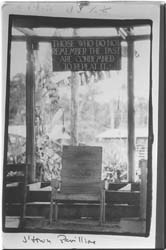
It is the most existential question arising from Jonestown: Should the deaths of the adults be considered as suicides, or as murders? It is also the question we are asked the most often.
Over the years, many writers have tossed around the terms of “murder” and “suicide” almost as shorthand descriptions, without examining what the words mean, or what their implications are, and certainly without fully defending the use of the words. Others fudge the issue, by characterizing the events of 18 November 1978 as “murder/suicide” or, more generically, “mass deaths.”
John R. Hall frames the issue in his book, Gone from the Promised Land, when he writes:
The question of how many people at Jonestown willingly took the poison always will be open to question. Certainly young children could not have evaluated very well what their actions would mean. The presence of armed guards shows at least implicit coercion, though the guards themselves reported their intentions to visitors in glorious terms and then took the poison. Nor was the situation structured as one of individual choice. Jim Jones proposed a collective action, and in the discussion that followed only one woman offered extended opposition. No one rushed up to tip over the vat of Flavor Aid. Wittingly, unknowingly, or reluctantly, they took the poison. (John R. Hall, Gone from the Promised Land, 2nd edition (New Brunswick, N.J.: Transaction, 2004), p. xviii.)
In this special section of the jonestown report, a number of former Temple members, scholars and professors who have written on Jonestown, and non-academic writers consider the question and write from their perspectives.
1. Murder or Suicide: What I Saw, by Tim Carter
2. Murder or Suicide: Coercion or Choice, by Don Beck
3. Was It Murder Or Was It Suicide? by Laura Kohl
4. Responsibility for Jonestown Deaths Falls on Us All, by John V Moore
5. Murder vs. Suicide: Individuals and the Collective, by Leigh Fondakowski
6. The Sacrament of Suicide, by Rebecca Moore
7. What They Chose, by Annie Dawid
8. Murder vs. Suicide: What the Numbers Show, by Josef Dieckman
9. To Be or Not to Be Was Not the Question, by Jim Hougan
10. And It Wasn’t Kool-Aid, by Phyllis A. Gardner
11. The Cultural Distaste for Death, by Richard Lawrence
12. The Limits of Language, by Michael Bellefountaine